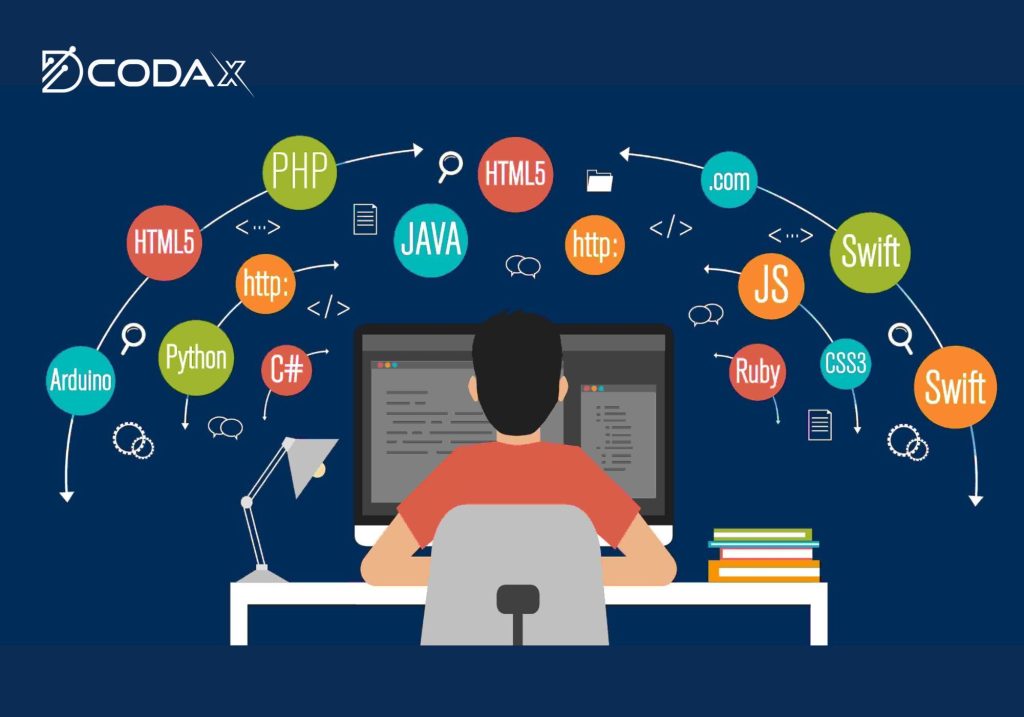The Winning Formula: Crafting an Exceptional App with the Right Technology Stack

In today’s fast-paced and ever-evolving digital landscape, app development has emerged as a vital pillar for businesses striving to maintain a competitive edge. As the demand for innovative and user-centric applications continues to soar, choosing the right technology stack has become an intricate puzzle that requires careful consideration. With a vast array of programming languages, frameworks, and databases at your disposal, making informed decisions that align seamlessly with your project’s unique requirements is of paramount importance.
In such a dynamic and rapidly evolving industry, the stakes of selecting the right technology stack are higher than ever. An optimal technology stack not only lays the foundation for a successful app but also directly impacts its performance, scalability, and user experience. A well-chosen stack can empower developers to unleash their creativity, streamline development processes, and deliver exceptional results. On the other hand, a suboptimal choice can lead to sluggish performance, compatibility issues, and unnecessary roadblocks that hinder progress. Therefore, investing the necessary time and effort into selecting the ideal technology stack is a strategic decision that sets the stage for your app’s triumph in the competitive digital arena.
Facebook
Instagram
Linkedin
Table of Contents
Add a header to begin generating the table of contents
Understanding the Importance of Choosing the Right Technology Stack

1.1 Enhancing Performance and Scalability:
A well-chosen technology stack can significantly impact the performance and scalability of your application. Selecting efficient programming languages and frameworks can ensure smooth operation, seamless user experience, and handle increasing user demands. Performance is critical for delivering a responsive and engaging user interface, while scalability enables your app to handle a growing user base and increased workload.
1.2 Development Speed and Efficiency:
Choosing a technology stack that developers are familiar with can expedite the development process. When developers have expertise in specific programming languages and frameworks, they can leverage their knowledge to build robust and efficient applications more quickly. Additionally, a comprehensive technology stack provides libraries, tools, and frameworks that aid in rapid development and streamline the implementation of features.
1.3 Long-Term Maintenance and Support:
Consider the availability of skilled developers, community support, and the maturity of the technology stack. Opting for a stack with an active community ensures long-term maintenance, timely updates, and effective issue resolution. By selecting technologies with ample resources and support, you can mitigate risks and ensure your app remains up-to-date and secure.
Factors to Consider When Choosing a Technology Stack

2.1 App Requirements and Project Scope
Begin by thoroughly understanding your app’s requirements and project scope. Consider factors such as target audience, functionality, scalability needs, and anticipated future enhancements. This analysis will help you identify the suitable technology stack components. For instance, if you’re building a data-driven application, a technology stack that supports efficient data storage and retrieval, such as databases optimized for handling large datasets, would be appropriate.
2.2 Programming Languages

Java:
Java offers robust scalability, extensive libraries, and cross-platform compatibility. It is suitable for enterprise-level applications with complex business logic and high-performance requirements. Java’s mature ecosystem, wide adoption, and extensive tooling make it a reliable choice for building scalable and robust applications.Java offers robust scalability, extensive libraries, and cross-platform compatibility. It is suitable for enterprise-level applications with complex business logic and high-performance requirements. Java’s mature ecosystem, wide adoption, and extensive tooling make it a reliable choice for building scalable and robust applications.
Python:
Python’s simplicity, readability, and vast ecosystem make it an excellent choice for rapid prototyping and building scalable applications. It is widely used for web and data-driven applications. Python’s extensive library collection, such as Django and Flask, streamlines development and allows developers to build complex applications efficiently.
JavaScript:
JavaScript is a versatile language used for both front-end and back-end development. It powers interactive user interfaces, supports server-side development (Node.js), and is essential for modern web and mobile app development. JavaScript frameworks like React, Angular, and Vue.js enable the creation of highly interactive and dynamic user interfaces.
Swift:
Swift is Apple’s preferred language for iOS and macOS app development. It provides a powerful and intuitive syntax, ensuring high performance and security for Apple platforms. Swift’s rich set of libraries and strong type safety enable developers to create engaging and feature-rich applications for Apple devices.
Kotlin:
Kotlin is gaining popularity in Android app development due to its conciseness, null safety, and seamless interoperability with Java. It offers enhanced productivity and reduced development time. Kotlin’s modern language features and seamless integration with existing Java codebases make it a compelling choice for building Android applications.
2.3 Frameworks

React Native:
React Native enables cross-platform app development using a single codebase. It combines the advantages of JavaScript and native platform components, allowing developers to build efficient and visually appealing applications for iOS and Android. React Native’s component-based architecture and hot-reloading capabilities expedite the development and facilitate code reuse.
Angular:
Angular is a comprehensive JavaScript framework suitable for building complex, feature-rich applications. It follows the Model-View-Controller (MVC) pattern, making it ideal for rapid development and content-driven applications. Angular’s robust architecture, powerful data binding, and extensive ecosystem contribute to its popularity among developers.
Django:
Django is a high-level Python framework known for its simplicity, security, and scalability. It follows the Model-View-Controller (MVC) pattern, making it ideal for rapid development and content-driven applications. Django’s batteries-included approach, built-in admin interface, and strong community support make it a preferred choice for Python-based web application development
Laravel:
Laravel is a popular PHP framework known for its elegant syntax and extensive ecosystem. It provides a clean and expressive development experience, making it a top choice for building scalable web applications. Laravel’s rich set of features, including ORM (Object-Relational Mapping) and a robust routing system, simplify the development process and enhance productivity.
Spring Boot:
Spring Boot, built on the Java ecosystem, simplifies the development of Java-based web applications. It offers powerful features, including dependency injection, easy configuration, and robust security. Spring Boot’s convention-over-configuration approach and comprehensive documentation enable developers to quickly build enterprise-grade applications.
2.4 Databases

MySQL:
MySQL is an open-source relational database management system (RDBMS) widely used for web-based applications. It offers excellent performance, reliability, and compatibility with various platforms. MySQL’s mature ecosystem, extensive community support, and ease of integration make it a popular choice for small to large-scale applications.
PostgreSQL:
PostgreSQL is a powerful open-source RDBMS known for its advanced features, scalability, and support for complex data types. It is suitable for applications with high data integrity requirements. PostgreSQL’s robustness, extensibility, and support for various programming languages make it a preferred choice for data-intensive applications.
MongoDB:
MongoDB is a NoSQL document-oriented database that provides flexibility and scalability for handling unstructured data. It is ideal for applications requiring dynamic data schemas and high scalability. MongoDB’s document-based data model and horizontal scalability make it suitable for agile development and handling large volumes of data.
III. Evaluating Compatibility and Integration
Third-Party Integrations:
Consider the compatibility of your technology stack with third-party services, APIs, and libraries. Ensure seamless integration with crucial functionalities like payment gateways, social media platforms, and analytics tools. Evaluate the availability of SDKs (Software Development Kits) or APIs that enable easy integration with popular services, reducing development effort and time..
DevOps and Deployment:
Evaluate the ease of deployment, continuous integration, and availability of DevOps tools and practices compatible with your chosen technology stack. Efficient DevOps practices facilitate automated testing, deployment, and monitoring of your application. Choose a technology stack that integrates well with popular DevOps tools, enabling streamlined deployment pipelines and efficient collaboration among development and operations teams.
Considerations for Mobile App Development

Native vs. Cross-Platform Development:
Determine whether you require a native app or can leverage cross-platform development frameworks like React Native, Flutter, or Xamarin. Native development offers the best performance and platform-specific features, while cross-platform development allows code reuse and faster development cycles. Consider the trade-offs and specific requirements of your
app before making a decision.
Platform-Specific Considerations:
For native app development, consider the specific requirements and guidelines of each platform (e.g., iOS and Android). Ensure your technology stack aligns with the platform’s best practices and performance optimizations. Account for platform-specific features, user experience guidelines, and performance considerations to deliver a seamless and optimized app experience on each platform.
Conclusion
Choosing the right technology stack for app development is a critical decision that significantly impacts your project’s success. By carefully considering factors such as app requirements, programming languages, frameworks, and databases, you can create an outstanding and attractive app that meets user expectations, performs efficiently, and scales effectively. Keep in mind that technology trends evolve, so it’s crucial to stay updated and adapt your technology stack as needed. With this comprehensive guide as your foundation, embark on your app development journey with confidence and empower your business to thrive in the digital age.
About us
Crafting an exceptional app requires the perfect blend of innovative ideas and the right technology stack. At Dcodax, we understand the critical role of choosing the right technologies to power your app’s success. Our experienced team meticulously analyzes your app requirements, business goals, and target audience to determine the optimal technology stack that aligns with your needs.
With expertise in native development using Swift or Kotlin, cross-platform frameworks like React Native or Flutter, and web-based solutions utilizing HTML5 and CSS3, we tailor the technology stack to deliver a robust, scalable, and feature-rich app. We stay abreast of the latest advancements in the industry, ensuring that your app remains future-proof and adaptable to changing market demands.
Partner with Dcodax to unlock the winning formula for your app’s success. Our carefully selected technology stack, combined with our passion for crafting exceptional apps, will help you create a standout digital experience that captivates users and achieves your business objectives.
With Dcodax by your side, the sky’s the limit!
For Any Type of Free Consultancy, Dcodax is Always Available for your Help.
For more; Contact Us Now






